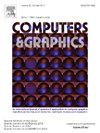Hyperkinetic movement disorder analysis using multidimensional projections
IF 2.5
4区 计算机科学
Q2 COMPUTER SCIENCE, SOFTWARE ENGINEERING
引用次数: 0
Abstract
Hyperkinetic movement disorders are a group of conditions characterized by involuntary movements such as tremors, sudden/uncontrollable jerks, abnormal postures, and random movements, which may have major impacts on the quality of life of individuals. The diagnosis of these disorders is often dependent on subjective clinical assessments, and there is a need for automatic methods that can support this diagnosis. Established clinical neurophysiological approaches use motion sensors to collect motion data from patients performing postural, action, or resting tasks to analyze and classify the types of disorders that affect patients. However, making sense of the high-dimensional space formed by patients, tasks, sensors, and disorders is challenging and time-consuming. In this paper, we propose a workflow to explore this space to select appropriate subsets of its data, transform it, and analyze it using multidimensional projections. We show how our workflow can lead to insights into the design of automated pipelines that automatically separate individuals with disorders from healthy individuals.

使用多维投影的多动运动障碍分析
多动性运动障碍是一组以不自主运动为特征的疾病,如震颤、突然/无法控制的抽搐、异常姿势和随机运动,这些可能对个体的生活质量产生重大影响。这些疾病的诊断往往依赖于主观的临床评估,因此需要能够支持这种诊断的自动方法。已建立的临床神经生理学方法使用运动传感器从执行姿势、动作或休息任务的患者收集运动数据,以分析和分类影响患者的疾病类型。然而,理解由患者、任务、传感器和疾病构成的高维空间是具有挑战性和耗时的。在本文中,我们提出了一个工作流程来探索这个空间,选择适当的数据子集,转换它,并使用多维投影来分析它。我们展示了我们的工作流程如何能够深入了解自动管道的设计,自动将患有疾病的个体与健康个体分开。
本文章由计算机程序翻译,如有差异,请以英文原文为准。
求助全文
约1分钟内获得全文
求助全文
来源期刊

Computers & Graphics-Uk
工程技术-计算机:软件工程
CiteScore
5.30
自引率
12.00%
发文量
173
审稿时长
38 days
期刊介绍:
Computers & Graphics is dedicated to disseminate information on research and applications of computer graphics (CG) techniques. The journal encourages articles on:
1. Research and applications of interactive computer graphics. We are particularly interested in novel interaction techniques and applications of CG to problem domains.
2. State-of-the-art papers on late-breaking, cutting-edge research on CG.
3. Information on innovative uses of graphics principles and technologies.
4. Tutorial papers on both teaching CG principles and innovative uses of CG in education.
 求助内容:
求助内容: 应助结果提醒方式:
应助结果提醒方式:


